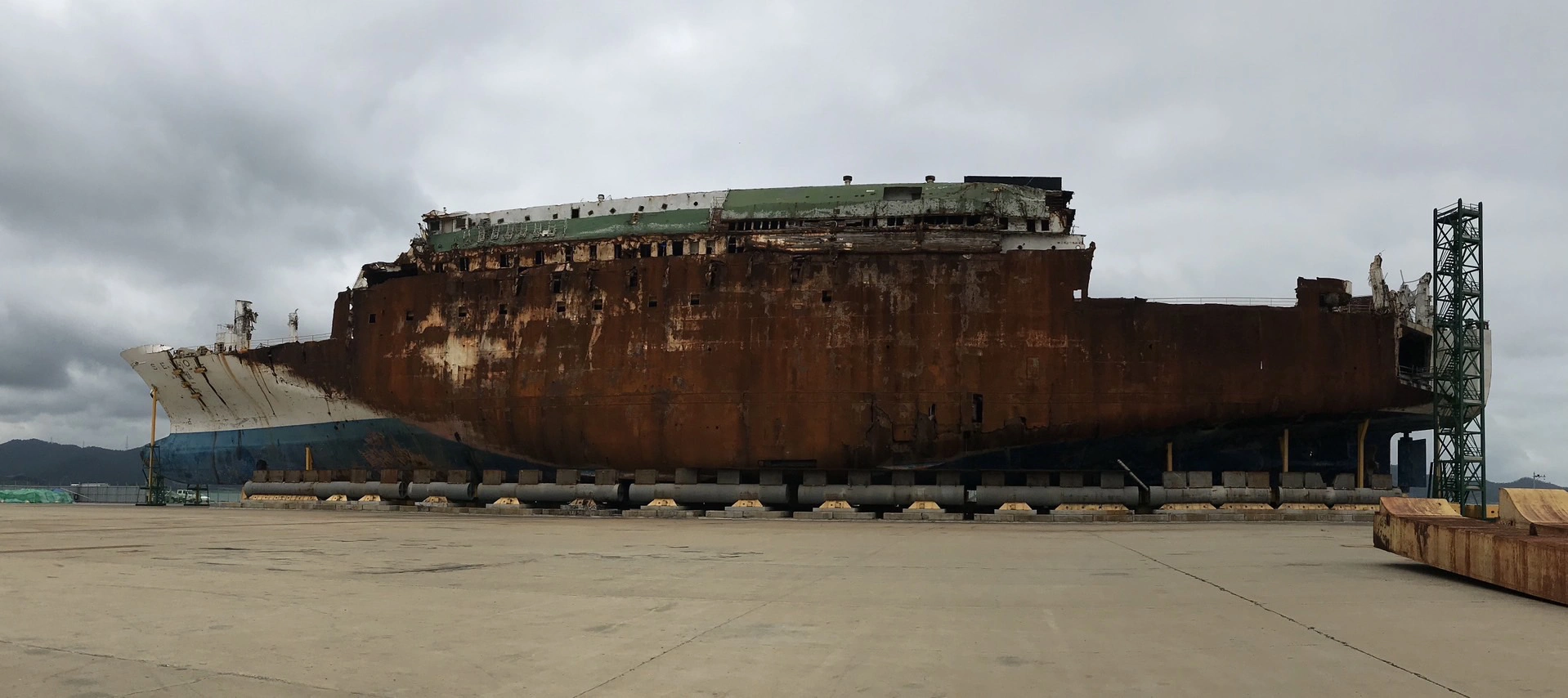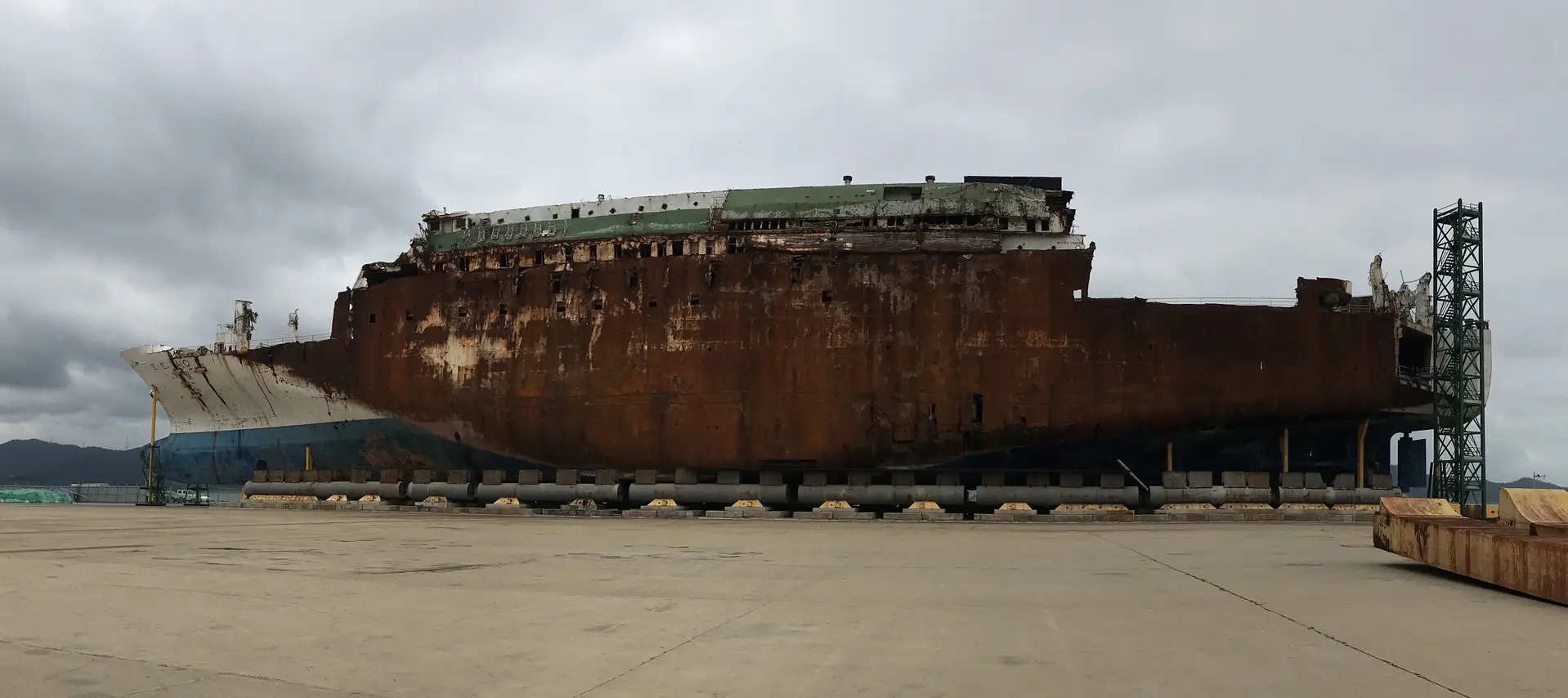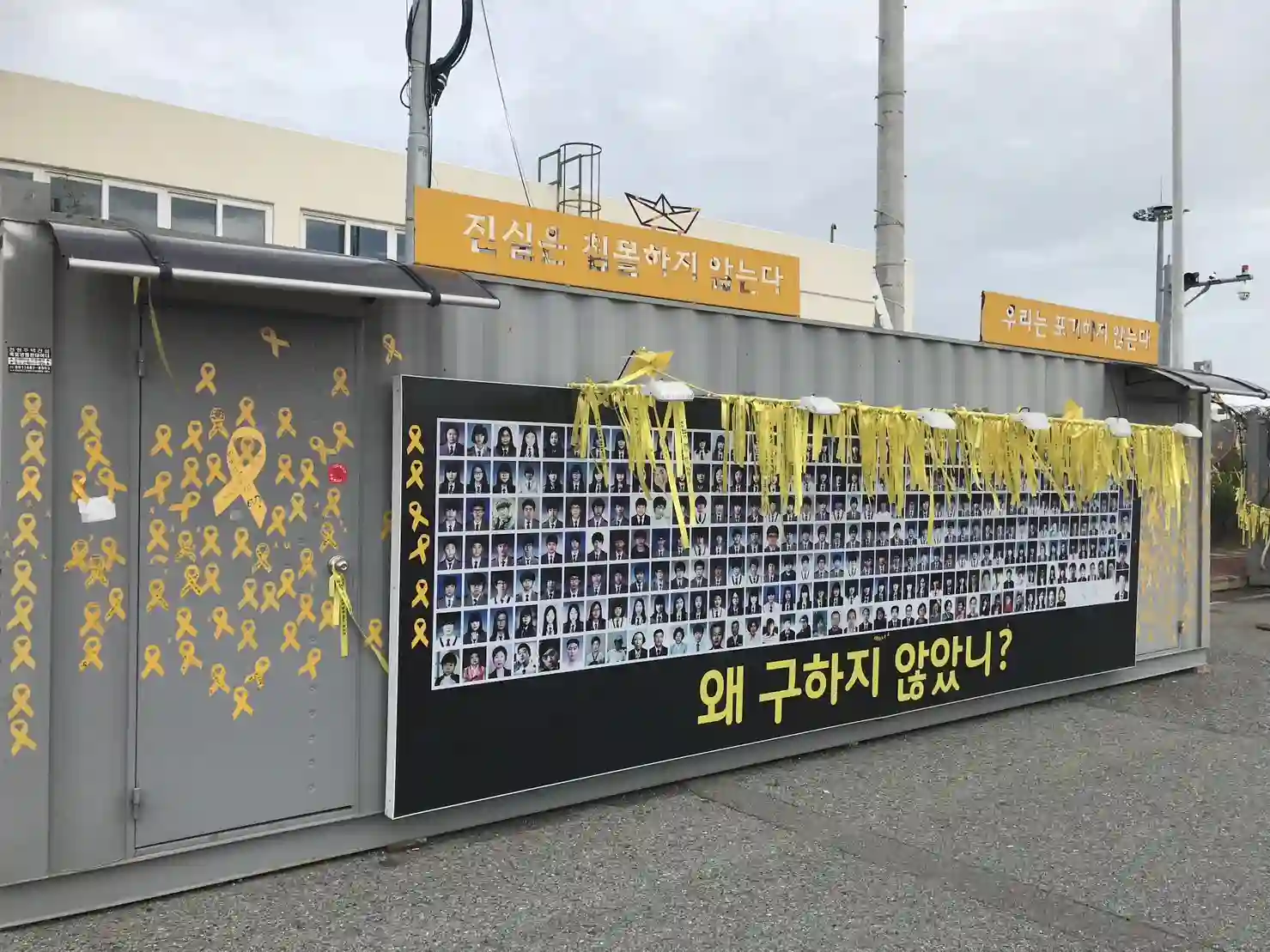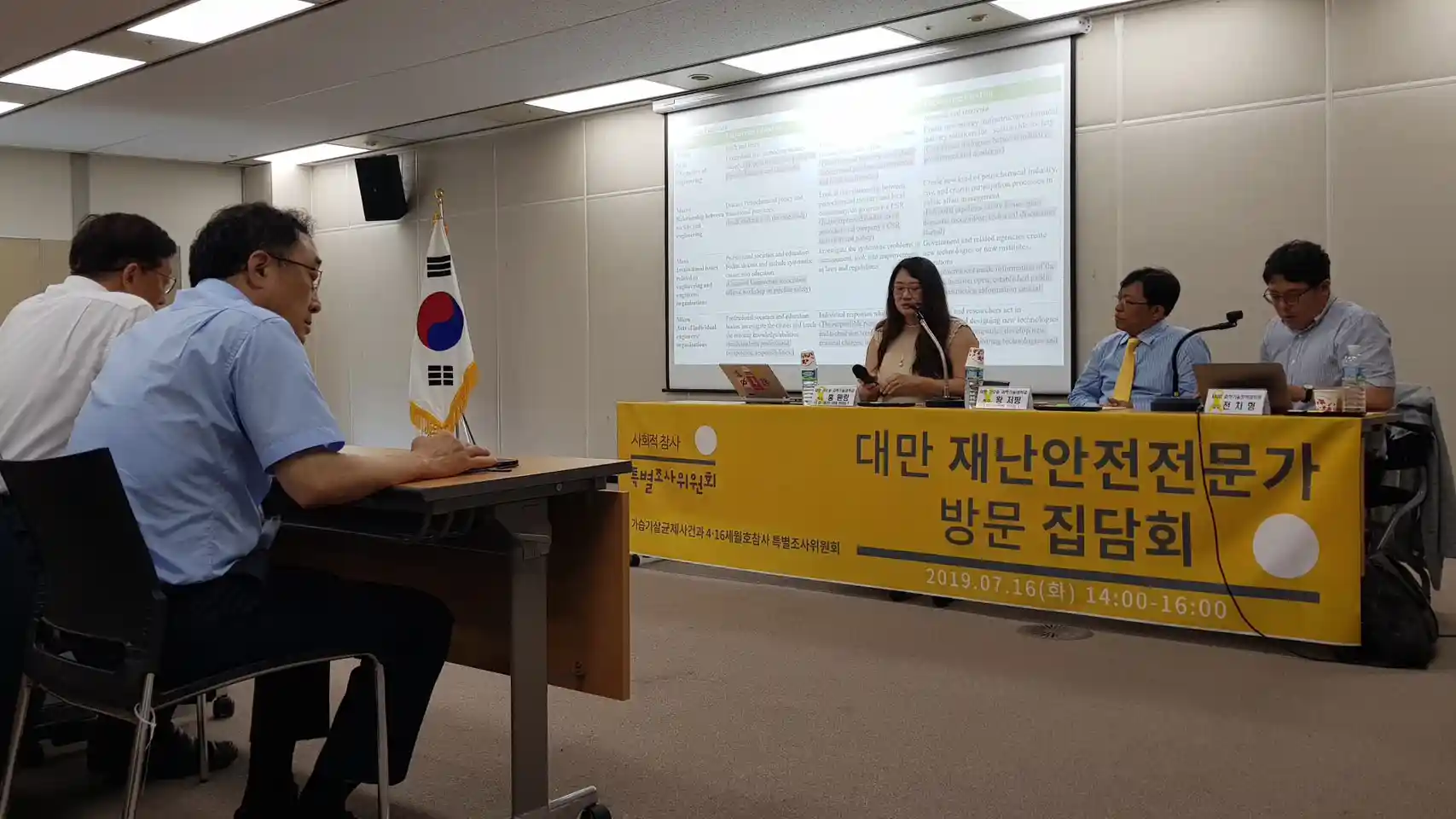Seven Years After the Sewol Ferry Disaster - Accountability, Pain, and Renewal in the Wake of Tragedy

Seven Years After the Sewol Ferry Disaster - Accountability, Pain, and Renewal in the Wake of Tragedy

(Source: https://commons.wikimedia.org/wiki/File:Ferry_Naminoue_20100214_brightened.jpg
Author: tsuda from Tsushima, Aichi, Japan)
At about 8 a.m. on April 16, 2014, the passenger ship Sewol, sailing from Port of Incheon to Jeju Island, suddenly tilted out of control off the coast of the southwest corner of the Korean Peninsula. The ship had almost completely sunk by noon. This was South Korea's worst shipwreck since 1970. 304 of the 476 people on board were killed, and 8 others died during the rescue process.
Public transportation has distinctive characteristics in terms of public service and technological governance. Incidents involving these modes of transportation often result in significant casualties, instilling a profound sense of fear in the general public. Maritime accidents differ significantly from land-based incidents involving cars, trains, or airplanes. Generally, even in distress, ships do not instantly sink. If individuals can evacuate to the sea using life-saving equipment or await rescue on board, the proportion of those in distress should logically be lower. However, this process involves multifaceted details in ship evacuation and rescue execution the design and application of technical equipment and systems. Moreover, passenger ferries often carry many passengers, which poses an increased risk when facing distress, placing more individuals in jeopardy.
Surrounded by a multitude of helicopters, cameras, and rescue boats, the Sewol slowly descended before the eyes of the world, broadcasted in real-time. Hastily abandoning ship, the captain and crew instructed passengers, mostly high school students, to remain in the cabins. During the gradual sinking over two hours, there was a failure to execute effective evacuation procedures. Subsequently, a chain of governmental inaction, inappropriate concealment measures, and even suppression of protests supporting the victims exacerbated the situation. Confronted with governmental dissent, the relatives of the victims opted to unveil details such as names and personal narratives in the public domain, mobilizing a resolute collective will for systemic change in response to the catastrophe. Families and citizens, laden with anger and sorrow, eventually staged a protracted protest at Seoul's Gwanghwamun Square. The government's letdown gave rise to actions against Park Geun-hye, culminating in the constitutional court's March 2017 verdict affirming the legitimacy of the impeachment.

On November 5, 2016, at the Gwanghwamun Square protest against President Park Geun-hye, a banner highlighting the Sewol incident was displayed. That evening, an estimated 200,000 participants attended the demonstration, according to civilian sources (photograph by the author).
After a maritime tragedy, the South Korean government allocated considerable workforce and resources to salvage the vessel and conduct maritime investigations. Three distinct investigative bodies were instituted: the Special Investigation Committee, composed predominantly of legal experts; the Vessel Investigation Committee, featuring marine and navigation specialists; and the Special Investigation Commission on Social Disasters, later formed by the Mun Jae-in government. These bodies probed into two major cases—the Sewol ferry disaster and the humidifier disinfectant incident. The committees attributed both incidents to the greed of private corporations, which overlooked public safety. Concurrently, governmental oversight measures were lacking, further amplifying the disaster's magnitude during subsequent mishandling. Post the Sewol incident, the government engaged in various concealment measures, triggering protests and appeals from the families of the victims. Consequently, the investigative committees established a subcommittee supporting the victims and formulating relevant legislation.

Salvaged wreckage of the Sewol ferry placed at Mokpo New Port (Photo by the author, 2019). 
At the memorial wall for the victims situated outside the Mokpo New Port shipyard (Photo by the author, 2019).
Maritime affairs is a highly specialized and compartmentalized field, with ship navigation-related regulations, inspections, and certifications all carried out by nearly the same technical experts. Such a technical framework has led to early difficulties in conducting investigations domestically in South Korea, sometimes even without consensus. In 2018, the investigative committee enlisted the expertise of MARIN, a top-tier international experimental facility based in the Netherlands, to simulate the shipwreck and sinking processes. The simulation encompassed computational modeling, ship model testing, and the integration of simulated bridge crew instructions to evaluate their influence on vessel dynamics. MARIN's analysis indicates that the Sewol experienced a reduction in stability due to factors such as retrofitting, overloading, and insufficient ballast water[1]. This led to abnormal rudder operation, rapid turns causing the vessel to tilt, and inadequate securing of cargo and vehicles, exacerbating the tilt as they shifted during the tilt. The vessel's inclination allowed seawater to directly enter the compartments from the C deck's ventilation pipes, hastening the sinking process. Investigators from Korea, bereaved families, Korean media, and STS scholars personally visited the Netherlands to witness MARIN's comprehensive experimental investigative analysis.

Due to the inability to reach a consensus, the Korean Accident Investigation Commission has released a publication containing investigative reports presenting divergent perspectives when read from both positive and negative standpoints. (Screenshot from the teachsewol website)
After completing the accident investigation, MARIN believes that reflecting on the Sewol incident is a societal responsibility, contributing to a safer maritime environment. Therefore, they have autonomously conducted additional ship model tests, proposing scientific recommendations to the International Maritime Organization (IMO) for amending ship stability regulations. They suggest that a vessel should not tilt beyond 15 degrees under normal or uncontrollable conditions. Beyond this threshold, passengers lose balance, making movement difficult, and cargo onboard risks become unmanageable, leading to a potential crisis. Following the Sewol incident, South Korea also mandated domestic passenger ships to install handrails in onboard passageways. This safety measure ensures that passengers have movable points of support between passages in the event of a tilting incident.

After the Sewol incident, handrails were installed along the passageways of ferries (photographed by the author on a ferry from Mokpo to Jeju Island in 2019).
In response to the Sewol incident, Professor Jeon Chihyung and associates at the Korean Advanced Institute of Science and Technology (KAIST) expeditiously launched the "teachsewol" website (http://teachsewol.org/). Their efforts involved compiling pertinent data and orchestrating student-led initiatives to generate public attention, such as the relayed public recitation of indictments in commemorative events. Having experienced such a profound descent into despair and pain yet compelled to seek a glimmer of hope to assuage the sense of suffocation, numerous television dramas, novels, and myriad works of art have been crafted in response to the tragedy of the Sewol ferry. The Liberty Times in Taiwan has released two translated editions: "The Liar: Confessions of a Diver in the South Korean Sewol Ferry Disaster" (original title: 거짓말이다) and "Those Beautiful Souls: Unforgettable Memories of the South Korean Sewol Ferry Disaster" (original title: 아름다운그이는사람이어라).
In Seoul's Gwanghwamun, rectangular wooden structures have replaced the tents of the long-standing protest site and the photographs of the victims, commemorating the tragedy through images, sound, and artistic pieces. Currently, the hull in Mokpo has almost been cleared during the investigative phase, and the sediment from the ship is packed and stored for potential use in constructing a permanent memorial in the future. The myriad impacts and changes since the incident, the trauma, and the healing mark Korea's entry into the "Post-Sewol era."

Images sourced from Books.com and Yahoo

Seoul's Gwanghwamun Square's Sewol Ferry Memorial was constructed on the original site of protest tents. (Photograph by the author, 2019)
One of the most well-known and solemnly remembered maritime disasters occurred 109 years ago on April 15th, involving the RMS Titanic, leading to the tragic loss of over 1500 lives. The incident is commonly attributed to the brittleness of iron plates, the unfortunate angle of collision with the iceberg causing extensive compartmental tearing, and human factors such as the captain disregarding a series of iceberg warnings. However, the sinking of a ship does not inevitably result in significant casualties; Titanic's calamity was aggravated by the lack of a sufficient number of lifeboats and improper execution of evacuation procedures, failing to ensure the rescue of the maximum number of passengers.
Post-investigation deemed that, according to the regulations at the time, the shipping company White Star Line was not at fault. Subsequently, the International Convention for the Safety of Life at Sea (SOLAS) was promptly drafted, mandating an adequate number of lifeboats and other emergency response measures. Robert J. Strange, in his centennial commemoration of the Titanic sinking titled "Who Sank the Titanic? The Final Verdict," squarely points the finger at the British Board of Trade, led by Churchill, accusing them of yielding to shipping industry pressure. They allegedly dismissed years of sailors' pleas for an adequate number of lifeboats, citing reasons such as "too many lifeboats on the deck would obstruct the view for VIP passengers." Strange even mocks the swift addition of lifeboats to all ships in the White Star Line fleet after the Titanic disaster, suggesting it was a response to the reluctance of American East Coast crew members to embark on ships. As more information is declassified and further research is conducted, we can anticipate the emergence of new narratives surrounding historical maritime disasters.
The Gao Zhong No. 6 Ferry Sinking Incident in Qijin, Taiwan, in 1973, which claimed the lives of 25 young women, remains indelibly imprinted in the memory of the Taiwanese people as one of the most devastating maritime tragedies. Right in Kaohsiung Port, this calamity unfolded before the eyes of the public, young women who had ventured to the 前鎮 expo processing zones to support their families who lost lives on board. The resting place of these unfortunate souls, collectively laid to rest in the Twenty-Five Maidens' Grave, underwent a transformation in 2008 into the Labor Female Memorial Park, embodying Taiwan's tale of suffering and rebirth.
Over the span of seven years, the shock and pain brought about by the Sewol ferry disaster may have dissipated in part through political reforms in South Korea, rigorous accident investigations, judicial accountability, and the implementation of more stringent regulations. As Taiwan confronted a series of significant technological disasters, including the explosion incident in Kaohsiung, the Puyuma Express accident, and the Taroko Express accident, what tangible actions have society taken after the initial astonishment and dismay?
The explosion disaster in Kaohsiung has yet to undergo a comprehensive cross-ministerial investigation and report. Furthermore, no memorial hall has been established incorporating detailed investigations into chemical pipeline technology and the review of industrial city governance. In the case of the Puyuma Express accident, which primarily involves Taiwan Railways' operations, the National Transportation Safety Board (NTSB) conducted an investigation and publicly disclosed the most transparent investigation report on similar accidents available online. However, a more severe Taroko Express accident unfolded two and a half years later. Similar to the explosion disaster in Kaohsiung, the incident can be attributed to conventional practices in engineering tendering, established norms in construction project management, and a culture of cost-effectiveness, colliding with the railway transportation system. We somberly inquire, what now? Similar to the response to the Sewol incident, can we incorporate more relevant individuals and scholars with diverse expertise to investigate organizational cultural issues, reshape, and subsequently establish proactive governance structures, education, and steps for improving existing technology? We earnestly hope that we can muster the collective strength to emit a light that contributes to a better world after the momentary dark cloud.
Reference:
[1] Stability, a term in naval science, quantifies the vessel's ability to return to an upright position after tilting to a certain angle.
Special thanks:
Special thanks to Professor Jeon, Chihyung for his assistance and the Korean Social Disaster Investigation Commission for facilitating our visit to Mokpo for an onboard investigation. We also appreciate the opportunity to share our research on the societal accountability issues related to large-scale disaster events with the commission at their Seoul office.

On the left is the former chairman of the investigation committee at that time, in the center-left is the current chairman, Wen Haosheng, and on the right is Professor Jeon Chihyung.

Wen-Ling Hong
Hong received her Ph.D. from the University of Michigan, Department of Naval Architecture and Marine Engineering U.S.A., in 2000. She moved back to Taiwan and became an engineering professor in Naval Architecture in 2005. Hong’s research covers various topics related to engineering and the ocean. She took an interdisciplinary approach to study engineering ethics, gender in engineering, public communication of science, engineering disasters at land and sea, traditional shipbuilding and culture, and underwater culture heritages. Hong chaired the Taiwan Science, Technology, and Society (STS) Association, an interdisciplinary academic society, from 2018-2022. She became the Deputy Minister of the Ocean Affairs Council in February 2023.
More related articles
